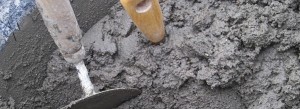Since slag powder differs greatly from fly ash and silica fume in the chemical composition and particle morphology, it exhibits different behaviors and plays different roles in cement concrete.
- Water Demand
It is generally believed that slag powder has little effect on the water demand. In the chemical composition and mineral composition, slag powder is closer to cement and thus exhibits similar surface properties to cement clinker. In the particle morphology, since slag powder is formed by grinding, it does not have the spherical particle morphology as some quality fly ash and silica fume but is similar to the cement particle, thereby not having a good lubrication effect. In the particle size, slag powder does not have the finer particle size as some quality fly ash and silica fume, so it also does not exhibit good filling behavior. And the relative density is larger than that of fly ash and silica fume, closer to cement clinker. Therefore, slag powder has little effect on the water demand.
(2) Water Retention
Numerous studies have shown that the water retention property of slag powder is far less than that of some quality fly ash and silica fume. The bleeding phenomenon will occur with the addition of some slag powder of bad gradation. Therefore, when using slag powder, we should choose the cement of better water retention property and appropriately add some materials with water-retaining functions.
- Fluidity
Under the circumstance of adding the same kind of water-reducing agent and the same mortar mixing ratio, the fluidity of slag powder mortar has been significantly improved and the gradual loss of fluidity has also been significantly alleviated. The reason for the improvement of fluidity is that the presence of slag powder has delayed the mutual overlapping of hydrates in the early stage of cement hydration and that the decrease in the content of C3A mineral has enabled it with a better compatibility with water-reducing agents. In addition, the slag powder reaching a certain degree of fineness also has a certain water-reducing effect.
- Setting Time
The initial setting time and final setting time of slag powder are somewhat delayed compared with ordinary mortar, but not much.
- Strength
Under the conditions of the same mixing ratio, strength level and natural curing, the early strength of slag powder is slightly lower than ordinary mortar, but the increase of 28d and afterwards is significantly higher than that of ordinary mortar.
- Durability
The slurry structure of slag powder mortar is relatively dense and slag powder can absorb the calcium hydroxide crystals generated by cement hydration, improving the interface structure of mortar, so the resistance to penetration and frost of slag powder mortar is significantly better than that of ordinary mortar. Since slag powder has a stronger effect of adsorbing chloride ions, it can effectively prevent chloride ions diffusing into it, improving the resistance to chloride ions. The resistance to sulfate attack of mortar depends on its resistance to penetration as well as the aluminate content and alkalinity in cement. In the slag powder mortar, the aluminate content and alkalinity are lower and it has high resistance to penetration, so the resistance to sulfate attack of slag powder mortar gets significantly improved. The decrease in the alkalinity of slag powder mortar is also very beneficial for the prevention and inhibition of alkali – aggregate reaction.
